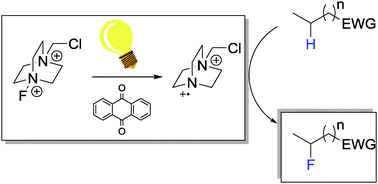Organic chemistry can appear unattractive to some students at first glance. The terminology it uses can make some see it as a difficult section of chemistry to understand. Fears of the subject area can then be compounded by the complexity of some organic compounds, the requirement to visualise them in 3D and a perceived need to rote learn lots of information. But there are many ways to help students see organic chemistry in all its glory.
http://www.rsc.org/eic/2014/07/organic-chemistry-teaching-learning
Student difficulties

Would your students be able to spot the chiral carbon atom? © Image courtesy of David Everett
Carbon-based materials are all around us and the diversity of these makes the study of carbon compounds both interesting and confusing. The very word organic has several meanings which may be more familiar to students, referring to the way some food products are produced or to living materials. The terminology we use can be a barrier to learning as students struggle with a whole new ‘language’ of specific terms which, designed to systematise nomenclature, can muddy the waters as we introduce new names for familiar materials. Ethanoic acid for acetic acid and poly(ethene) for polythene, for example. ‘Old’ names persist in industry and in some areas of higher education simply because they are familiar and short and yet the dictates of examinations mean we have to help students to grapple with this whole new language.
http://www.rsc.org/eic/2014/07/organic-chemistry-teaching-learning
 Efficient route to functionalized γ-resorcylate compounds from
dioxinone derivatives
Efficient route to functionalized γ-resorcylate compounds from
dioxinone derivatives
 Efficient route to functionalized γ-resorcylate compounds from
dioxinone derivatives
Efficient route to functionalized γ-resorcylate compounds from
dioxinone derivatives
 Facile synthesis of 1,2,4-trisubstituted imidazoles from
propargylamines and nitriles
Facile synthesis of 1,2,4-trisubstituted imidazoles from
propargylamines and nitriles
 Direct conjugate addition of alkenes to α,β-enones is
described
Direct conjugate addition of alkenes to α,β-enones is
described
 New nickel catalyst to catalyze the cross-coupling reaction
between carbonyl compounds and phenole derivatives
New nickel catalyst to catalyze the cross-coupling reaction
between carbonyl compounds and phenole derivatives
 Would your students be able to spot the chiral carbon atom? © Image courtesy of David Everett
Would your students be able to spot the chiral carbon atom? © Image courtesy of David Everett